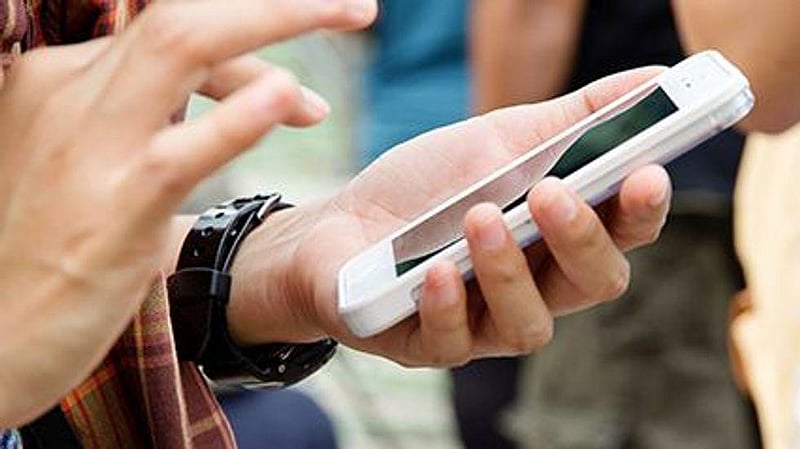Manténgase sano!

- Ernie Mundell and Robert Preidt
- Posted August 26, 2021
Smart Phones, Watches Can Mess With Implanted Pacemakers
Do you have an implanted defibrillator or pacemaker? Try keeping your smart watch or smart phone a few inches away from them.
New research from the U.S. Food and Drug Administration finds that your phone or watch could interfere with implanted heart devices.
Based on the new findings, heart patients and health care providers should be aware of potential risks, the research team said.
Patients can then "take simple proactive and preventive measures, like keeping consumer electronics, such as certain cellphones and smart watches, six inches away from implanted medical devices and not carrying consumer electronics in a pocket over the medical device," advised study author Seth Seidman. He's a research electrical engineer at the FDA's Center for Devices and Radiological Health (CDRH).
The danger comes from magnets found in implanted cardiac devices and in smart phones and smart watches.
The CDRH launched its investigation after reports of smart phones and watches disrupting implanted medical devices.
As the team explained, implanted defibrillators or pacemakers have a setting called "magnet mode," meant to be used when a patient is having a procedure where electromagnetic interference may occur, or when the device's functioning needs to be suspended for medical treatment.
But, magnet mode can also be triggered accidentally by strong magnetic fields, changing how the device works and posing a risk of serious harm to the patient.
For the study, the researchers tested the magnetic field output of all iPhone 12 and Apple Watch 6 models at varying distances from implanted heart devices.
The results showed that in close proximity, the magnetic fields of the smart phones and watches are strong enough to trigger magnet mode in implanted heart devices. But that doesn't happen if a distance of six inches or more is maintained, according to the study published online Aug. 25 in the journal Heart Rhythm.
Seidman said people with implanted heart devices who also have smart phones shouldn't panic.
"We believe the risk to patients is low," he said, "and the agency is not aware of any adverse events associated with this issue at this time. However, the number of consumer electronics with strong magnets is expected to increase over time. Therefore, we recommend people with implanted medical devices talk with their health care providers to ensure they understand this potential risk and the proper techniques for safe use."
Two experts in cardiovascular care said simple steps can safeguard patients.
"This does not mean that patients with pacemakers should not use smart phones, only that they have to be mindful of where they place their phone at all times," said Dr. Michael Goyfman, who directs clinical cardiology at Long Island Jewish Forest Hills, in New York City. "For example, if a patient routinely wears suits, they probably should not put their phone in their suit breast pocket if they also have a cardiac implantable electronic device."
Another expert agreed.
"It is OK to use your personal electronic devices but keep them six inches or more from your implanted device," said Dr. Laurence Epstein, system director of electrophysiology at Northwell Health's Sandra Atlas Bass Heart Hospital, in Manhasset, N.Y.
"The magnets are slightly stronger in the new iPhones," Epstein added, "but this study demonstrates that six inches should still be adequate. It is important that patients not be scared or made unduly anxious about their pacemaker or ICD [implantable cardioverter-defibrillator] and using their phone or watch."
More information
The American Heart Association has more on devices that may interfere with pacemakers and implantable defibrillators.
SOURCES: Michael Goyfman, MD, director of clinical cardiology, Long Island Jewish Forest Hills, New York City; Laurence M. Epstein, MD, system director, electrophysiology, Northwell Health's Sandra Atlas Bass Heart Hospital, Manhasset, N.Y.; Heart Rhythm, news release, Aug. 26, 2021



